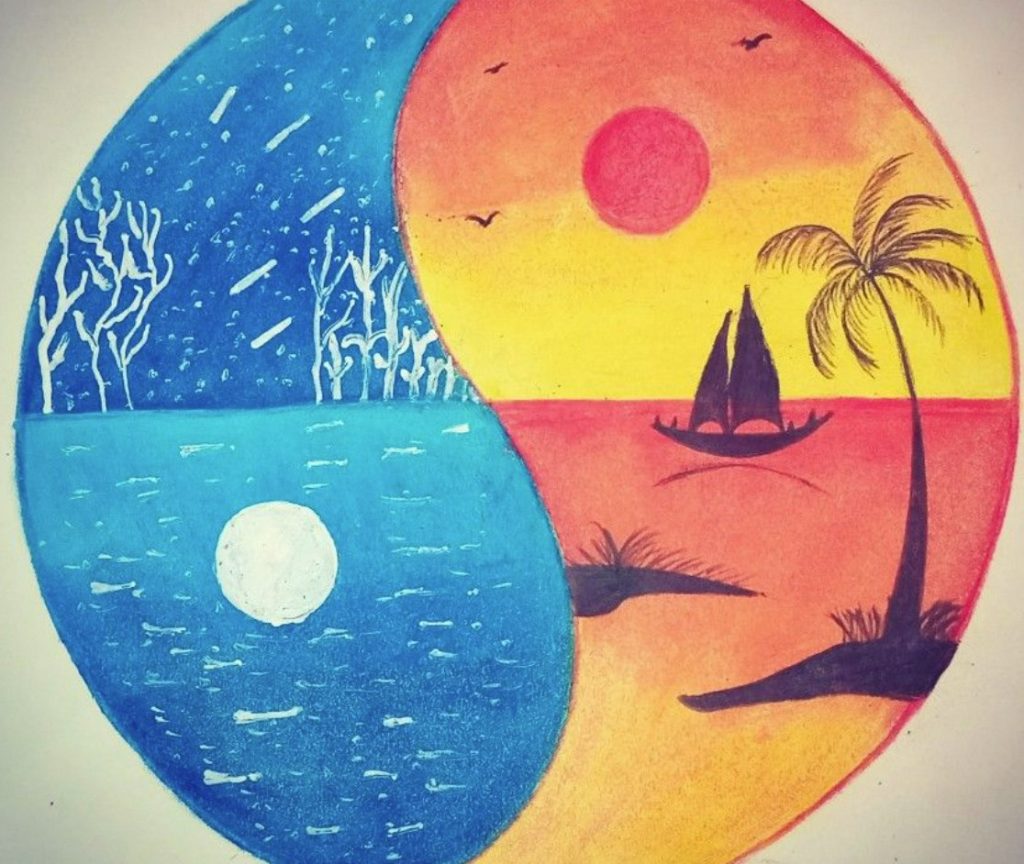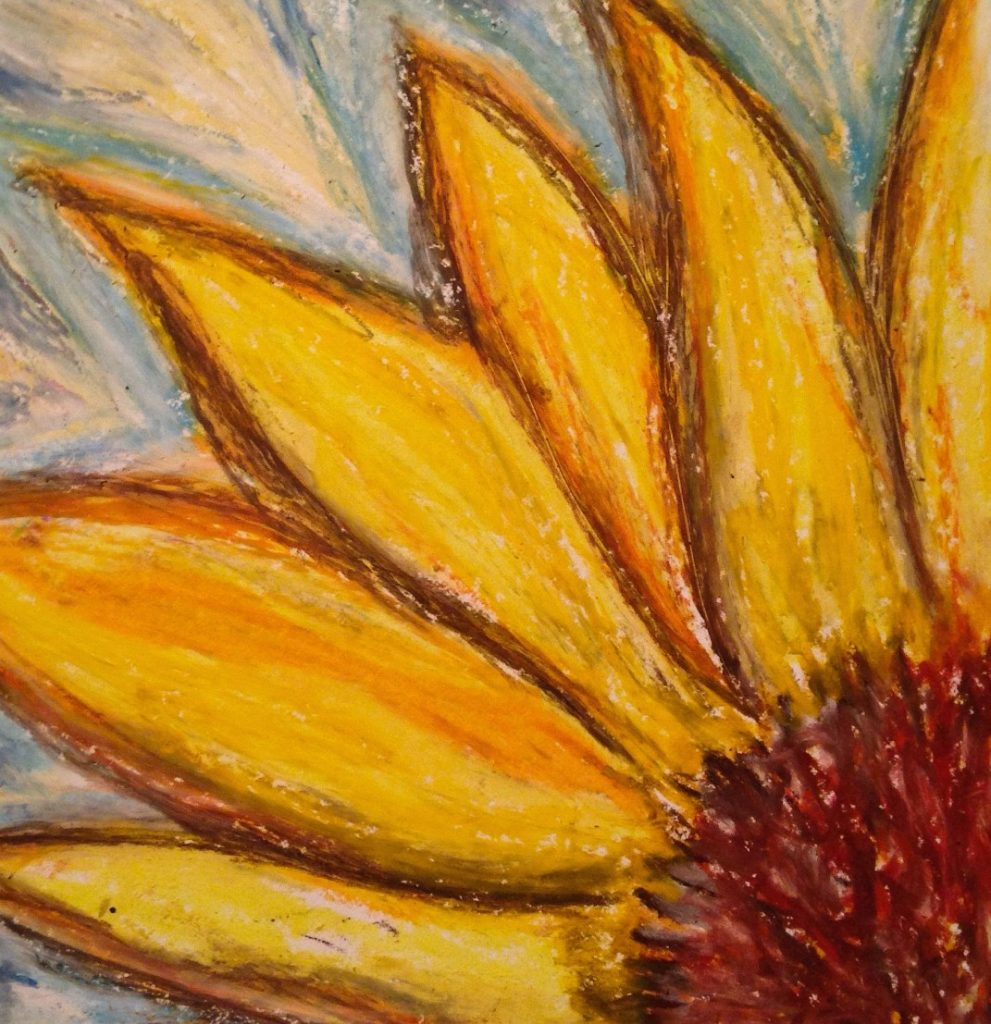Oil pastels, with their rich textures and vibrant colors, transcend mere representation. They offer a powerful tool for capturing not just a physical likeness, but the very essence and emotions of a subject. This article explores the realm of expressive oil pastel portraiture, guiding you through techniques and approaches to create portraits that resonate with feeling.

Part 1: Delving Deeper: From Likeness to Emotional Resonance
1. The Power of Color and Texture:
Oil pastels provide a distinct and expressive means of conveying emotions on a canvas. In contrast to the smooth blendability of oil paints, oil pastels offer a textured surface, brimming with the energy and vitality of each individual stroke. The selection and application of colors play a pivotal role in channeling emotions through this medium. Warm and vibrant tones have the capacity to evoke feelings of joy, exuberance, and dynamism. They infuse the artwork with a sense of vitality and passion. On the other hand, the use of cool and muted tones can suggest feelings of serenity, introspection, or even melancholy. This imbues the composition with a contemplative and meditative quality. As artists harness the distinctive properties of oil pastels, they have the power to manipulate color and texture to evoke a diverse range of emotions. This creates visually compelling and evocative pieces that resonate deeply with viewers. The dynamic interplay of color and texture in oil pastel artworks offers a rich and multidimensional language of emotions, synonymous with the human experience.
2. Capturing the Eyes: Windows to the Soul:
The eyes are often considered the windows to the soul. In oil pastel portraits, dedicate special attention to the eyes. Use expressive brushstrokes and a variation of colors to convey the emotions you see reflected within them. A hint of red in the whites of the eyes can suggest anger, while a soft, blended blue can evoke tranquility.

Part 2: Techniques for Emotional Impact: Beyond Traditional Representation
1. Selective Focus and Abstraction:
In traditional portraiture, the entire face is typically depicted in intricate detail, capturing every feature with precision. However, in expressive portraiture, artists have the freedom to employ selective focus as a powerful artistic tool. By using this technique, you can choose to emphasize specific features such as the eyes or mouth. Employ bold strokes and vibrant colors to highlight these key areas, while allowing other parts of the portrait to remain more muted or deliberately blurred. This intentional variation in focus and intensity draws the viewer’s attention to the emotions and expressions that you aim to convey. It creates a dynamic and impactful visual experience. By leveraging selective focus, you guide the viewer’s gaze and evoke a heightened sense of intimacy and emotion within the portrait. This results in a more evocative and compelling artistic statement. This approach offers a departure from traditional techniques and provides a unique avenue for artists to express their creativity and communicate their vision with greater depth and impact.
2. The Power of Background and Symbolism:
The background in an expressive portrait isn’t merely an afterthought. It can be a powerful tool for storytelling and emotional reinforcement. A stormy sky can reflect inner turmoil, while a field of wildflowers can represent joy and freedom. Consider incorporating symbolic elements that resonate with the emotions you want to portray.

Part 3: Capturing Movement and Energy: Techniques for Dynamism
1. The Dance of Lines and Strokes:
Straight lines and precise strokes can create a sense of stoicism or formality. However, expressive portraits often benefit from a sense of movement and dynamism. Experiment with loose, gestural strokes that capture the energy of your subject. Pay attention to the direction of your strokes – upward strokes can suggest hope and aspiration, while downward strokes might convey sadness or despair.
2. Fragmentation and Distortion:
In traditional portraiture, achieving perfect symmetry and accurate proportions is often a primary goal to create a realistic representation of the subject. However, when venturing into expressive portraiture, artists have the opportunity to embrace a greater degree of creative freedom and experimentation. One innovative approach involves fragmenting the portrait. It focuses on specific features such as the eyes, mouth, or hands, treating them with bold colors and exaggerated details. By accentuating individual elements, this technique can effectively convey powerful emotions such as intensity or anxiety. It heightens the dramatic impact of the artwork. Breaking away from traditional conventions, this method allows for a more visceral and evocative portrayal. It captures the raw essence of emotions and experiences. Through the intentional fragmentation and exaggeration of features, artists can create a striking and thought-provoking representation. It resonates deeply with viewers and encourages introspection and emotional connection. This approach opens up a realm of artistic possibilities, offering a fresh perspective on portraying the complexities of human emotions and experiences.

Part 4: Finding Your Voice: Embracing Experimentation and Personal Expression
1. Reference Photos as Inspiration, Not Dictates:
While reference photos can be helpful for capturing basic features, don’t feel confined by them. In expressive portraiture, capturing the essence of a person goes beyond a literal representation. Use the reference photo as a starting point, then allow your creativity to take flight, translating emotions and feelings onto the canvas through color, texture, and mark-making.
2. Finding Beauty in Imperfections:
The allure of oil pastels resides in their intrinsic textural qualities. They offer artists the opportunity to embrace the captivating marks and imperfections that emerge during the artistic process. Rather than seeking flawlessness, these imperfections can enhance the character and depth of the artwork. They contribute a rawness that complements the expressive nature of portraiture. The varied and tactile surfaces created by oil pastels add a layer of richness to the artwork, capturing the essence of the medium. This bestows an organic and authentic quality to the portrait. By welcoming these textural subtleties and imperfections, artists can infuse their portraits with a compelling sense of vitality and individuality. This creates a visual narrative that resonates with a raw and visceral energy.

Through the exploration of texture and the acceptance of imperfections, artists can convey emotions and tell stories in a way that is uniquely expressive and evocative. Each mark and stroke becomes a part of the portrait’s visual language. This fosters a deep and meaningful connection between the artwork and its audience.
In conclusion, oil pastels empower you to create portraits that go beyond mere likeness. By delving into the language of color, texture, and expressive techniques, you can capture the emotions that flicker beneath the surface. Embrace experimentation, find your artistic voice, and allow oil pastels to become your tool for creating portraits that resonate with the very essence of your subject.


